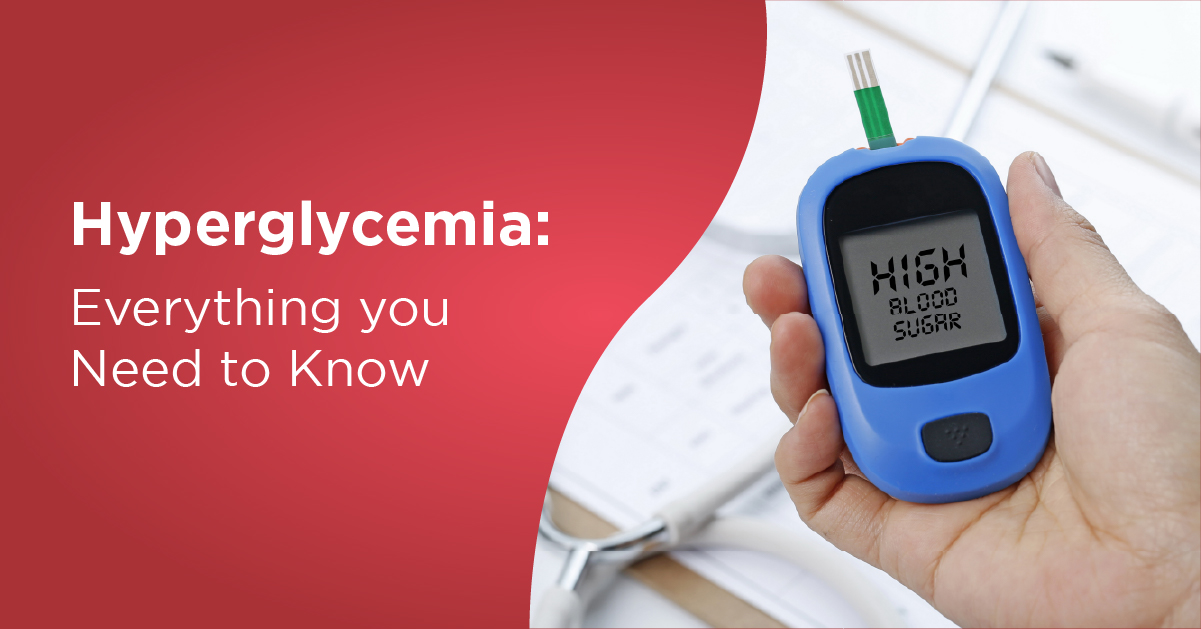Everything you need to know about Hyperglycemia

Hyperglycemia is the medical term for high blood sugar. This is a condition that often affects people who have diabetes. It happens when the body either has too little insulin or when can’t use insulin properly to turn glucose into energy. This means, there’s an excessive amount of sugar circulating in the blood plasma.
Each cell in the human body needs glucose for energy. Glucose is produced through various metabolic processes in the body and is supplied to the cells through blood. Insulin, a hormone, makes your cells absorb glucose from the blood. When you have too little insulin or non-functional insulin, the cells cannot get enough energy for their normal functions. Due to lack of energy, the liver starts producing more glucose, which the body cannot utilize. Eventually, the glucose concentrations become too high in your blood, and altogether this condition is known as hyperglycemia.
This condition is linked to the development of long-term diabetes complications, which include nephropathy (kidney disease), retinopathy (eye disease), neuropathy (nerve damage), foot and skin problems, heart and blood vessel disease, tooth and gum disease.
Symptoms
Many people don’t notice the symptoms until blood sugar levels are dangerously high or other complications develop. If you’ve had diabetes for a long time, you may not experience symptoms until your blood sugar levels have been high for days or weeks. Some symptoms to look out for include:
- Headaches
- Blurry vision
- Extreme Thirst
- Very frequent urination
- Drowsiness
- Fatigue
- Weight loss
- Fruit smell on child’s breath
- Fast breathing
- Warm, dry skin
- Vomiting
- Eventual loss of responsiveness
Causes
Hyperglycemia happens either when your body does not have enough insulin, or when your body is not using insulin correctly. There are a variety of things that can lead to this, including:
- Inadequate insulin dosing
- Insulin resistance
- Eating more than planned
- Not exercising as much as planned or inactivity
- Illness (cold, flu, etc.) or stress
- Certain medications
Diagnosis
Testing your blood sugar with a home blood glucose meter is the easiest way to diagnose hyperglycemia. The normal blood sugar range is between 80 and 126 mg/dL for healthy individuals under the age of 59 or between 100 and 130 mg/dL for older individuals or those with other medical conditions. Target blood sugar levels may differ for people who have diabetes.
The best time to test your blood sugar levels is before meals. You’ll usually see an increase in blood sugar after you eat as your body digests food.
Treatment
It is important to treat the symptoms of hyperglycemia promptly to prevent complications from diabetes. Signs are hard to identify, but self-monitoring and early treatment lowers these risks and improves the quality of life. Tracking your blood sugar allows early recognition of possible patterns and is an important step in preventing further complications.
Take these steps to take control of your blood sugar level:
- Physical activity: regular physical activity (150 minutes per week) decreases blood sugar but should be avoided if ketones are present.
- Dietary modifications: Limiting sugary beverages and maintaining consistent carbohydrate intake throughout the day helps stabilize blood sugar.
- Medications: Take medications as prescribed, track your glucose levels, and follow up with your medical team to determine if changes need to be made to your medication doses or regimen.
Regency Hospital has experienced Endocrinologists who are experts in managing and treating diabetes and related conditions.

 Call-an-Ambulance
Call-an-Ambulance



